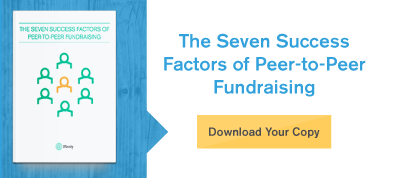What To Do When Your Fundraising Platform Isn't Perfect
So, your fundraising platform isn’t perfect.
In interviews or sales conversations, we hear this often, in various levels of severity, as we talk to our clients about their fundraising software and back-end systems. Sometimes, this means that your CRM was “custom built” for your organization…10 years ago. Other times, it means that your third party platforms don’t speak the same language. Or maybe you’re running a new program on a crowdfunding platform with limited capability. Even clients with high-dollar solutions that look great on paper suffer the occasional headache.
We could brush off these challenges, or say that technology isn’t as important as your people, or reminisce about an era where in-person outreach was the norm. But platform problems are valid, and they can impact your ability to execute on fundraising and stewardship strategies. Further, the day-to-day hurdles that put barriers between your team, your data, and your constituents often translate into frustration for your hard-working staff, who may have to spend precious time on workarounds.
It may be tempting to assume that a large-scale data migration and system overhaul is the only solution for your technology woes, but those solutions offer few short-term gains and require a hefty investment, lots of staff time, outside vendors, and a change management process. In short, those expensive packages aren’t always feasible right now.
With that in mind, and with year-end just around the corner, here are three of the most common platform challenges we see, and what you can do to impact your fundraising success in the short term.
1. Your peer-to-peer platform and your third party integrations don’t speak the same language.
 What this looks like: Despite great marketing, we know that there’s no such thing as a perfect package when it comes to peer-to-peer platforms, CRM’s, and CMS’s – and that usually means that you’re left to manually match up data from one source with another, that sending e-mails takes you way too long, or that your reporting capabilities are limited.
What this looks like: Despite great marketing, we know that there’s no such thing as a perfect package when it comes to peer-to-peer platforms, CRM’s, and CMS’s – and that usually means that you’re left to manually match up data from one source with another, that sending e-mails takes you way too long, or that your reporting capabilities are limited.- What you can do: Acknowledge that you can’t have the full 360-degree perspective you want. Let this aspiration go, and then narrow your focus. What are the one, two, or three key activities, touchpoints or data points that are most critical to success? Narrow those down, then try a few workarounds on for size. For example, if you can’t track conversions through pixels on social, consider adding msource links. If you can’t send emails to all of the segments you’d like to reach, focus on manually pulling only lists of team captains or top fundraisers, so that they receive custom messages on a timely basis.
2. Your once “custom solution” is getting in the way.
- What this looks like: A system was custom-built for your organization before peer-to-peer fundraising was a twinkle in the development department’s eye. When you want to document your touchpoints with constituents, you enter custom codes or add notes onto an existing record, which may or may not have three duplicates.
- What you can do: Investigate your options for an upgrade. These situations often require a third party vendor to support a complicated migration to bring you up to date. In the interim, simplify and focus. And focus starts with data.
If your data is a mess, then leverage your team’s knowledge of how your program is performing. If what you’re seeing in the system doesn’t look right, then don’t be afraid to take some high-level reporting offline (Excel spreadsheets or Google documents are your friend!). The key data points you’ll want to track on are program-level revenue and event-level revenue year over year, because that will lend insights as to which events or fundraisers your program relies on for growth. Chances are, a handful of your events are powering most of your revenue – and that handful is where your staff should focus stewardship, cultivation, and activation energy.
3. You’ve opted for a free or web-hosted fundraising platform, and there is functionality left to be desired.

- What this looks like: You’ve developed a robust e-comm plan, but you discover that you can’t send triggered emails to your fundraisers. Your registration data lives in a separate place from your fundraising data. There’s no intuitive place to house fundraising tools on your event page.
- What you can do: Be diligent about promoting the same URL or landing page in all of your recruitment messaging, whether that’s online or offline. Send constituents to the most direct path to set up their fundraising page instead of to a site that sells tickets or collects RSVPs. Set up a help phone line and email address so that a dedicated staff person can facilitate the registration process.
Since your email capabilities are limited, leverage phone or in-person outreach as much as possible. Go into those conversations with one or two specific calls to action that you’d like the fundraiser to take, and make them simple. For example, ask for a self-donation. Similarly, simplify the messages that do go out via e-mail. Consolidate all of the great advice in your fundraising tools to the most important nuggets, and share only those in emails that are no more than a few lines long.
If you’re saddled with one of these three common challenges, don’t dismay! At the end of the day, you aren’t alone. Remember that relationships with fundraisers and human capital (your staff) are your most important assets, and leverage them to compensate for your systems headaches. You might find that doing it “old school” yields important new leads.
Share this
You May Also Like
These Related Stories

Five Things We Learned In Our First Year At Plenty: #4 You Need 365 Days Of Communications

What's Hiding In Your Peer-to-Peer Data?



No Comments Yet
Let us know what you think